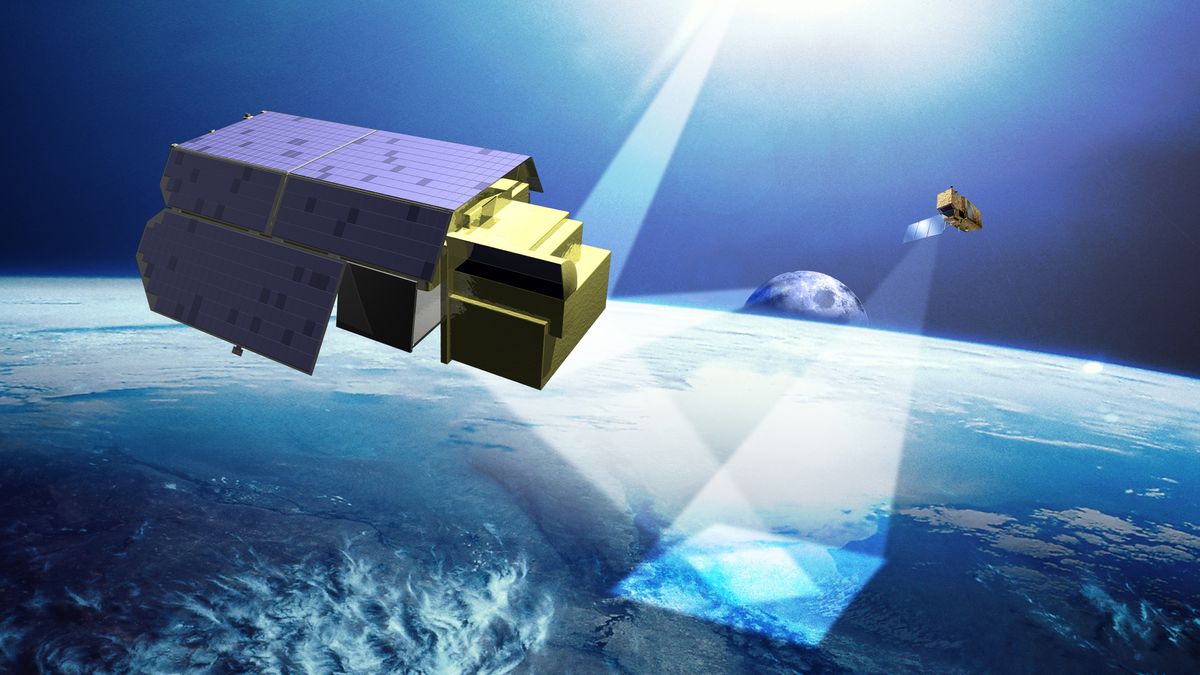
A new space mission will measure how much heat gets trapped in Earth's atmosphere to help gauge whether humanity is making any progress in tackling the worst effects of climate change.
The mission, called TRUTHS (for Traceable Radiometry Underpinning Terrestrial- and Helio- Studies), is currently being prepared by the European Space Agency (ESA) and its partners. It will study the so-called Earth energy balance — the difference between how much energy arrives at the planet from the sun and how much gets reflected back to space. The more heat Earth keeps, the warmer it gets, and it's the dangerous greenhouse gases that create conditions for the planet to trap more of the incoming heat.
The TRUTHS mission, introduced at the UN Climate Change Conference (COP26) in Glasgow, Scotland, on Wednesday (Nov.3), will "set a benchmark to detect change in Earth's climate system", ESA said in a statement. It consists of a satellite that could launch into orbit in 2029.
Related: World leaders pledge crackdown on methane emissions. Here's how satellites can help.
"The mission will play a vital role in improving how we monitor climate change using satellite data and support the decisive climate action that global nations are negotiating at COP26," Beth Greenaway, head of Earth observation and climate at the UK Space Agency, which is ESA's key partner for TRUTHS, said in the statement.
The spacecraft will carry two main instruments: the Cryogenic Solar Absolute Radiometer and the Hyperspectral Imaging Spectrometer. These two instruments will continuously measure incoming and reflected solar radiation. The mission will help detect changes in Earth's climate faster but also create a super-accurate reference system that will be used as a benchmark for other measurements and climate models.
The mission is still awaiting a decision on funding, but if all goes well, it should be in orbit by 2029, ESA said in the statement.
Satellites play a key role in monitoring the signs of climate change, but a recent report by the Committee on Earth Observation Satellites said that accuracy of space-based observations needs to improve to enable scientists and policy-makers to assess whether mitigation measures have any effect, the UK Space Agency said in a statement. TRUTHS might help tackle this challenge.
"TRUTHS is an important mission as it will provide the gold standard of calibration for space-based Earth observation, a kind of 'standards laboratory in space'," said Justin Byrne, Head of Earth Observation and Science at aerospace company Airbus, which is leading the industrial consortium developing the mission.
Europe is taking climate change seriously, and it's no surprise why. Speaking during a briefing at COP26 earlier this week, Samantha Burgess, deputy director for climate change services at the European Earth observation program Copernicus, said that Europe and the Arctic are warming much faster than the rest of the world.
"Globally, right now we are at 1.2 degrees Celsius above pre-industrial levels," Burgess said. "But in Europe, we are close to 2.2 degrees Celsius above pre-industrial levels and the Arctic is close to 3 degrees Celsius above pre-industrial levels."
The Paris Agreement, negotiated at the previous big climate change conference, COP21, which took place in Paris in 2015, binds countries to strive to limit global warming to 1.5 degrees Celsius compared to pre-industrial times.
The current rate of warming, Burgess said, will see Earth reach the dreaded 1.5-degree C threshold by 2034.
Humankind is already experiencing what life in a warmer world looks like. According to the World Meteorological Organization, extreme weather events are now a 'new normal', and the summer of 2021 delivered plentiful evidence of that all over the world.
Floods of an intensity seen once in 1,000 years ripped through several European countries in July. In Germany alone, nearly 200 people died. Experts caution that what used to be a once in a 1,000 event, is set to become much more common.
Related stories:
"With climate change, emergencies and disasters become more frequent and more extreme," Vera Thiemig, scientific officer and researcher at the Joint Research Centre of the European Commission, said in the briefing. "If we do nothing, in Europe, every year 15 million people will be at risk of forest fires, 90,000 people per year will die due to heatwaves, 2 million people will be affected by coastal and riverine floods, droughts will expand and tundra will disappear to the point of nothing."
Keeping global warming within 1.5 degrees C will, according to Thiemig, reduce the risk of wildfires as well as that of heat related deaths by two thirds. The risk of severe floods will go down by 50%.
Follow Tereza Pultarova on Twitter @TerezaPultarova. Follow us on Twitter @Spacedotcom and on Facebook.
"much" - Google News
November 08, 2021 at 06:45PM
https://ift.tt/304mmt2
New space mission will measure how much heat Earth is trapping from climate change - Space.com
"much" - Google News
https://ift.tt/37eLLij
Shoes Man Tutorial
Pos News Update
Meme Update
Korean Entertainment News
Japan News Update
Bagikan Berita Ini
















0 Response to "New space mission will measure how much heat Earth is trapping from climate change - Space.com"
Post a Comment